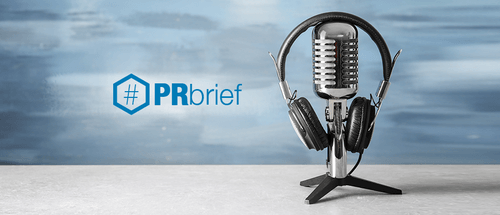If you’re a marketing or communications professional, you might be wondering how to improve your business’ media relations.
What does it take to get an internal idea into the hands of a journalist? Are you using outreach plans that hit on what a journalist wants or needs?
So Tell Me What You Want (What You Really, Really Want)

Well, you’re in luck because I’m a journalist and have been on the receiving end of good (and bad) story pitches for years.
I’ll use my creative licence to borrow some wise words from the ‘90s British pop music group Spice Girls song Wannabe to tell you what I want (read: what a journalist really, really wants).
Do Your Research
Your public relations and media plan should start with research.Journalists conduct research every day. In some ways, their skills often make them some of the best researchers out there.
Why?
Journalists must quickly sift through mountains of information, trashing irrelevant data and setting aside the stuff they need. This good research sense also develops another skill: they have a really good B.S. meter.
Here’s an extreme example:
If I’m a courts/crime reporter and I receive a pitch about transportation or business development (that doesn’t involve crime)…
- There is no way I’m going to read/listen to your pitch
- If the pitch is sent by email and totally off my beat, you will get blocked
- Only if it’s a good enough story idea (where the sender has at least researched my outlet and audience) will I possibly forward it on to a proper journalist in the newsroom.
Take your time. Read about the journalist. What are his or her beats? What is their audience? Their outlet’s coverage area?
When it comes to the PR-Journalist relationship, more than 78-percent of journalists surveyed by Cision (a global public relations software company) said communications professionals should “(tailor) the pitch to suit my beat/coverage.” More than 77-percent also said “researching/understanding my media outlet” was just as important.
So how do you go about the research? Social media is often a good place to start.
Journalists may be part of a corporate media outlet, but social media allows journalists to create their own brand. Their channels can give you an understanding about a journalist’s interests and coverage topics, in-turn helping you to better tailor your pitch.
Pitching Preferences and Press Releases
Okay, you’ve done your research, tailored your pitch and are ready to fire off that first pitch!
Hold. Up.
Snail Mail? So last century. (sarcasm) Mail is still used and has a place, but takes time and money.
Fax? Definitely still used, but not nearly as often as it once was.
Phone call?
Well, if I don’t have a previous relationship with you and you cold call my office, I will likely not take the call and your voicemail will get lost in the black hole that is the office phone system (until I have time to sit down and retrieve it).
If you do get me on the phone (and I have time to talk) I will take notes about your pitch, but I will always end up asking for you to send the same exact information in an email.
Email is best.
Amid all the content coming in from all sides, story ideas, pitches and press releases can get lost. That’s why I always preferred emails.
Why? They are portable, I can quickly search them across multiple devices and I don’t have to worry about misplacing them.
Almost all journalists agree, according to Cision. A whopping 93-percent want a story sell to come by email and that email is always an acceptable pitching method.
In the tailored email, be sure to give me the 5W1H (Who, What, Where, When, Why and How) and let me know if there are expert sources available for interviews.
Give Me Experts

While I would have a list of sources, stories or beat contacts that I kept in touch with on a weekly or bi-weekly basis — mostly by phone — press releases and media alerts would make up a fair share of my television station’s incoming information.
Public relations and communications professionals remain important points of contact for journalists, particularly in the early stages of press outreach.
A new product from a locally headquartered company, an initiative by an area non-profit, a ribbon cutting for a recently completed manufacturing facility.
Was a reporter assigned to do a story on every press release that came in? No. But there were times that I would get a pitch forwarded to me for follow up, or I would save a particular press release because there was an idea or expert I could use in the future.
Experts in contaminated water testing, financial planning, architecture and infrastructure projects.
Identify the experts on your team. Ask them if they are okay with conducting media interviews on their subject area (both on the phone and in-person).
For me, the best outreach was a simple, conversational email. No press release. Just show me that you’ve done your homework, you’re not hawking a product for immediate coverage and you can provide something that I might want or need in the future.
Make an impression on me that I will not want to forget.
Takeaways from the Professionals
These are just some of the highlights from Cision’s state of the media survey. An infographic summarizing the report is linked below.
Navigating the world of marketing and public relations outreach can be overwhelming and first impressions are everything. Let Element’s team of public relations and content marketing experts make an impression on you. Give us a call, check out our website and our creative culture, come in for a visit and let’s figure out how we can work to get your company the exposure it deserves.
I guarantee you’ll be impressed.










